
Which Bible Books are Inspired?
What makes a religious text ‘inspired’? And who gets to decide? These questions have sparked passionate debates for thousands of years, leading different religious groups to recognize different collections of books as their sacred scripture.
You might think it’s simple: ‘If God inspired it, it’s scripture. If humans wrote it, it isn’t.’ But it’s not that straightforward. Even texts everyone agrees were written by humans (like the Psalms of David) are considered inspired. Meanwhile, some books claiming divine authorship are widely rejected as forgeries.
Also, a book’s inspiration, authenticity, and value are three separate things:
- A book can be authentic (written by its claimed author) but not inspired (like Paul’s lost letter to Laodicea).
- A book can be inspired even though we don’t know who wrote it (like Hebrews).
- A book can be valuable for historical study even if it’s neither authentic nor inspired (like the Gospel of Thomas).
Think of it this way: just as finding a modern forgery of an ancient document can reveal things about the time when it was forged, even ‘fake’ religious texts can provide valuable historical insights about the communities that created and preserved them.
So how did different religious groups decide which books to accept? That’s quite a story, and it starts long before Christianity even existed.
The Development of Sacred Collections
The very first ‘canon’ of scripture wasn’t even called a canon. Around 400 BC, Jewish scholars began recognizing certain texts as having special authority. They didn’t hold a council or take a vote, it happened gradually, as communities increasingly treated certain books as uniquely authoritative.
Did you know that the earliest known fixed collection of sacred texts was actually the Aramaic Targums? While Greek-speaking Jews were still debating which books to include, Aramaic-speaking communities had already established their collection.
Jewish Canon Formation
By Jesus’ time, most Jews recognized three collections of sacred texts: the Law (Torah), the Prophets (Nevi'im), and the Writings (Ketuvim). But different Jewish communities had slightly different collections…
The Sadducees only accepted the Torah. The Pharisees accepted what we now call the Hebrew Bible. Meanwhile, Greek-speaking Jews used the Septuagint, which included several additional books like Tobit and 1 Maccabees.
Early Christian Usage
The earliest Christians didn’t start by creating their own canon, they inherited Jewish scripture. But which version? That’s where it gets complicated…
When the apostles quoted scripture, they often used the Greek Septuagint translation, which contains extra books than the Hebrew Bible, and different versions of certain ones (like Ezra, Daniel, and Esther). So Christians speaking different languages had different versions of the same books and some had extra ones!
The First Christian Writings
Here’s a surprise: the earliest Christians didn’t immediately consider their own writings to be ‘scripture.’ Paul’s letters were practical communications, and the Gospels were written to preserve eyewitness testimony. But soon, communities began treating these texts with the same reverence as Jewish scripture.
By around AD 100, churches had started reading Paul’s letters in their gatherings. By AD 150, the four Gospels were being treated as authoritative accounts. Yet there was still no official ‘list’ of Christian scripture.
Challenges and Responses
The need for a defined canon became urgent in the 2nd century. Why? Two major challenges:
- The gnostic theologian Marcion of Sinope created his own stripped-down canon, rejecting the Old Testament and accepting only modified versions of Luke and some of Paul’s letters.
- Various groups were circulating texts claiming to be written by apostles. Some preserved genuine traditions, others promoted very different ideas about Jesus and his teachings.
Church leaders responded by emphasizing books they could trace back to apostolic sources. But different communities made different choices… The Diatessaron (a single book which tried to combine the events of all four Gospels into one narrative) became standard in Syria, while Rome preferred the four separate Gospels.
Regional Differences Emerge
By the 3rd century, most churches agreed on the four Gospels and Paul’s letters. But what about other books? The answers varied by region:
- The Western churches debated Hebrews, James, and Revelation.
- The Eastern churches questioned 2 Peter, 2 John, 3 John, Jude, and Revelation.
- Some communities accepted books like 1 Clement and the Shepherd of Hermas
These regional differences would eventually develop into the distinct canons we see today among Catholic, Orthodox, and Protestant traditions.
The ‘Western Five’ Controversy
The Eastern churches had particular trouble accepting what became known as the ‘Western Five’ books, that is:
- 2 Peter
- 2 John
- 3 John
- Jude
- Revelation (especially!)
Why such strong resistance?
Several key concerns emerged:
- Authorship Questions: Many doubted these books were written by their claimed authors. Dionysius of Alexandria argued that Revelation’s style was too different from John’s Gospel to be by the same author. Eusebius mentions that some early Christians even wrote entire books arguing that Revelation was false and couldn’t have been written by John.
- Theological Concerns: The vivid imagery in Revelation troubled many Eastern theologians. Some worried it could promote dangerous millennial theories or be misused by heretical groups.
- Limited Early Usage: These books were rarely quoted by early Christian writers and weren’t widely circulated in Eastern regions.
The Syrian Church was particularly resistant - their standard Peshitta Bible excluded these books until the 600s. Even today, some Eastern churches remain cautious about Revelation, either excluding it from public reading or treating it with special reserve.
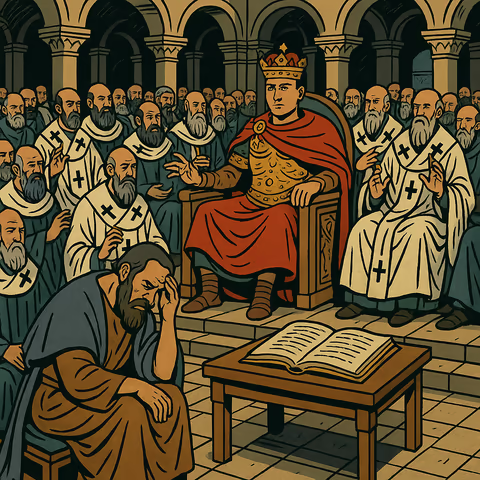
Bible Canon Timeline
See our timeline of Bible canon formation to see how the canons developed over time.
List of Books
Key
- Canon = Fully ‘canonical’ scripture (meaning accepted as inspired of God)
- Deutero = Deuterocanonical, meaning ‘secondary canon’ (perhaps inspired to some extent)
- Useful = Useful for study and respected, but not considered inspired
- History = Historical value only
- Reject = Considered spurious, heretical, or otherwise ignored
| Book | Protestant | Catholic | Eastern Orthodox | Oriental Orthodox | Ethiopian | Jewish |
|---|---|---|---|---|---|---|
| Torah/Pentateuch | ||||||
| Genesis | ✅ Canon | ✅ Canon | ✅ Canon | ✅ Canon | ✅ Canon | ✅ Canon |
| Exodus | ✅ Canon | ✅ Canon | ✅ Canon | ✅ Canon | ✅ Canon | ✅ Canon |
| Leviticus | ✅ Canon | ✅ Canon | ✅ Canon | ✅ Canon | ✅ Canon | ✅ Canon |
| Numbers | ✅ Canon | ✅ Canon | ✅ Canon | ✅ Canon | ✅ Canon | ✅ Canon |
| Deuteronomy | ✅ Canon | ✅ Canon | ✅ Canon | ✅ Canon | ✅ Canon | ✅ Canon |
| Historical Books | ||||||
| Joshua | ✅ Canon | ✅ Canon | ✅ Canon | ✅ Canon | ✅ Canon | ✅ Canon |
| Judges | ✅ Canon | ✅ Canon | ✅ Canon | ✅ Canon | ✅ Canon | ✅ Canon |
| Ruth | ✅ Canon | ✅ Canon | ✅ Canon | ✅ Canon | ✅ Canon | ✅ Canon |
| 1-2 Samuel | ✅ Canon | ✅ Canon | ✅ Canon | ✅ Canon | ✅ Canon | ✅ Canon |
| 1-2 Kings | ✅ Canon | ✅ Canon | ✅ Canon | ✅ Canon | ✅ Canon | ✅ Canon |
| 1-2 Chronicles | ✅ Canon | ✅ Canon | ✅ Canon | ✅ Canon | ✅ Canon | ✅ Canon |
| Ezra (Beta) | ✅ Canon | ✅ Canon | ✅ Canon | ✅ Canon | ✅ Canon | ✅ Canon |
| Nehemiah | ✅ Canon | ✅ Canon | ✅ Canon | ✅ Canon | ✅ Canon | ✅ Canon |
| Esther | ✅ Canon | ✅ Canon | ✅ Canon | ✅ Canon | ✅ Canon | ✅ Canon |
| Deuterocanonical Historical | ||||||
| Tobit | 📜 Historical | 📖 Deutero. | ✅ Canon | ✅ Canon | ✅ Canon | ❌ Rejected |
| Judith | 📜 Historical | 📖 Deutero. | ✅ Canon | ✅ Canon | ✅ Canon | ❌ Rejected |
| 1 Maccabees | 📜 Historical | 📖 Deutero. | ✅ Canon | ✅ Canon | ✅ Canon | 📜 Historical |
| 2 Maccabees | 📜 Historical | 📖 Deutero. | ✅ Canon | ✅ Canon | ✅ Canon | 📜 Historical |
| 3 Maccabees | 📜 Historical | 📜 Historical | ✅ Canon | ✅ Canon | ✅ Canon | 📜 Historical |
| 4 Maccabees | 📜 Historical | 📜 Historical | 💡 Useful | ✅ Canon | ✅ Canon | 📜 Historical |
| Ezra (Alpha) | 📜 Historical | 📜 Historical | ✅ Canon | ✅ Canon | ✅ Canon | ❌ Rejected |
| Wisdom Literature | ||||||
| Job | ✅ Canon | ✅ Canon | ✅ Canon | ✅ Canon | ✅ Canon | ✅ Canon |
| Psalms | ✅ Canon | ✅ Canon | ✅ Canon | ✅ Canon | ✅ Canon | ✅ Canon |
| Proverbs | ✅ Canon | ✅ Canon | ✅ Canon | ✅ Canon | ✅ Canon | ✅ Canon |
| Ecclesiastes | ✅ Canon | ✅ Canon | ✅ Canon | ✅ Canon | ✅ Canon | ✅ Canon |
| Song of Songs | ✅ Canon | ✅ Canon | ✅ Canon | ✅ Canon | ✅ Canon | ✅ Canon |
| Deuterocanonical Wisdom | ||||||
| Wisdom of Solomon | 📜 Historical | 📖 Deutero. | ✅ Canon | ✅ Canon | ✅ Canon | ❌ Rejected |
| Sirach (Ecclesiasticus) | 📜 Historical | 📖 Deutero. | ✅ Canon | ✅ Canon | ✅ Canon | 📜 Historical |
| Psalm 151 | 📜 Historical | 📜 Historical | ✅ Canon | ✅ Canon | ✅ Canon | 📜 Historical |
| Psalms of Solomon | 📜 Historical | 📜 Historical | 💡 Useful | 💡 Useful | ✅ Canon | 📜 Historical |
| Prophets | ||||||
| Isaiah | ✅ Canon | ✅ Canon | ✅ Canon | ✅ Canon | ✅ Canon | ✅ Canon |
| Jeremiah | ✅ Canon | ✅ Canon | ✅ Canon | ✅ Canon | ✅ Canon | ✅ Canon |
| Lamentations | ✅ Canon | ✅ Canon | ✅ Canon | ✅ Canon | ✅ Canon | ✅ Canon |
| Ezekiel | ✅ Canon | ✅ Canon | ✅ Canon | ✅ Canon | ✅ Canon | ✅ Canon |
| Daniel | ✅ Canon | ✅ Canon | ✅ Canon | ✅ Canon | ✅ Canon | ✅ Canon |
| Hosea-Malachi | ✅ Canon | ✅ Canon | ✅ Canon | ✅ Canon | ✅ Canon | ✅ Canon |
| Deuterocanonical Additions | ||||||
| Baruch | 📜 Historical | 📖 Deutero. | ✅ Canon | ✅ Canon | ✅ Canon | ❌ Rejected |
| Letter of Jeremiah | 📜 Historical | 📖 Deutero. | ✅ Canon | ✅ Canon | ✅ Canon | ❌ Rejected |
| Additions to Daniel | 📜 Historical | 📖 Deutero. | ✅ Canon | ✅ Canon | ✅ Canon | ❌ Rejected |
| Additions to Esther | 📜 Historical | 📖 Deutero. | ✅ Canon | ✅ Canon | ✅ Canon | ❌ Rejected |
| New Testament | ||||||
| Four Gospels | ✅ Canon | ✅ Canon | ✅ Canon | ✅ Canon | ✅ Canon | ❌ Rejected |
| Acts | ✅ Canon | ✅ Canon | ✅ Canon | ✅ Canon | ✅ Canon | ❌ Rejected |
| Pauline Epistles | ✅ Canon | ✅ Canon | ✅ Canon | ✅ Canon | ✅ Canon | ❌ Rejected |
| Hebrews | ✅ Canon | ✅ Canon | ✅ Canon | ✅ Canon | ✅ Canon | ❌ Rejected |
| Catholic Epistles | ✅ Canon | ✅ Canon | ✅ Canon | ✅ Canon | ✅ Canon | ❌ Rejected |
| Revelation | ✅ Canon | ✅ Canon | ✅ Canon | ✅ Canon | ✅ Canon | ❌ Rejected |
| Ethiopian Additions | ||||||
| Jubilees | ❌ Rejected | ❌ Rejected | ❌ Rejected | 📜 Historical | ✅ Canon | 📜 Historical |
| Enoch | ❌ Rejected | ❌ Rejected | ❌ Rejected | 📜 Historical | ✅ Canon | 📜 Historical |
| Joseph ben Gurion | ❌ Rejected | ❌ Rejected | ❌ Rejected | 📜 Historical | ✅ Canon | ❌ Rejected |
| Other Early Christian | ||||||
| Didache | 📜 Historical | 📜 Historical | 💡 Useful | 💡 Useful | 💡 Useful | ❌ Rejected |
| 1 Clement | 📜 Historical | 📜 Historical | 💡 Useful | 💡 Useful | 💡 Useful | ❌ Rejected |
| 2 Clement | 📜 Historical | 📜 Historical | 💡 Useful | 💡 Useful | 💡 Useful | ❌ Rejected |
| Shepherd of Hermas | 📜 Historical | 📜 Historical | 💡 Useful | 💡 Useful | 💡 Useful | ❌ Rejected |
Note: The Ethiopian canon varied somewhat over the years, and the Eastern canon mostly rejected the Western Five books for a long time, with some still rejecting them today.
Index of Disputed Books
- 1 Clement
- 2 Clement
- 1 Enoch
- 1 Maccabees
- 2 Maccabees
- 3 Maccabees
- 4 Maccabees
- Additions to Daniel
- Additions to Esther
- Baruch
- Ezra (Alpha)
- Joseph ben Gurion (Josippon)
- Jubilees
- Judith
- Letter of Jeremiah
- Psalms of Solomon
- Shepherd of Hermas
- Sirach (Ecclesiasticus)
- The 151st Psalm
- Tobit
- Wisdom of Solomon
1 Clement
Written around AD 95-96 by Clement of Rome to the Corinthian church during a leadership dispute.
Historical Context
A letter addressing church unity and proper order, using Old Testament examples and early Christian traditions about apostolic succession.
Arguments for Inspiration
- Very early Christian document
- Written by a prominent church leader
- Read in some early churches alongside scripture
- High view of Old Testament inspiration
- Found in important biblical manuscripts like Codex Alexandrinus
Arguments against Inspiration
- Author doesn’t claim divine inspiration
- Written as a pastoral letter, not scripture
- Limited early acceptance as canonical
- Author cites scripture as external authority
- Contains the legend of the Phoenix bird, which is fictional
Our comments
This is one of the earliest and most respected Christian documents outside the New Testament. It is perhaps the closest we can get to something resembling an additional Bible book. However, it contains a few statements that are clearly not inspired.
2 Clement
Written around AD 140-160, despite being attributed to Clement of Rome. It’s actually the earliest known Christian sermon outside the New Testament.
Historical Context
A sermon emphasizing repentance, judgment, and the relationship between the church and Christ. Unlike 1 Clement, it’s not really a letter at all.
Arguments for Inspiration
- Found alongside 1 Clement in some ancient manuscripts
- Read in some early churches
- Contains early Christian teachings
- Preserves some otherwise unknown sayings attributed to Jesus
Arguments against Inspiration
- Not actually written by Clement
- Much later than 1 Clement
- Shows signs of gnostic influence
- Never seriously considered for the canon
- Author doesn’t claim inspiration
Our comments
While historically interesting as one of our earliest Christian sermons, it was never widely considered inspired scripture. Even those who accepted 1 Clement as authoritative generally recognized 2 Clement as a later work by someone else.
1 Enoch
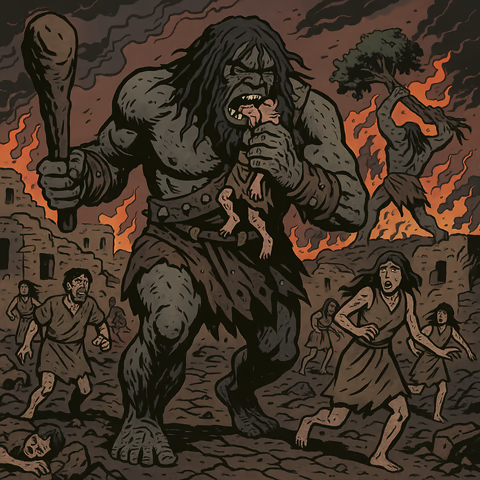
Composite work written between 300 BC and AD 100, with the oldest portions possibly dating to 400 BC.
Historical Context
Collection of five books about Enoch’s supposed heavenly journeys, visions of history, astronomical observations, and prophecies about the final judgment.
Arguments for Inspiration
- Possibly quoted in Jude
- Found among Dead Sea Scrolls
- Influenced early Christian thought
- Important for understanding Second Temple Judaism
Arguments against Inspiration
- Very unlikely to be written by Enoch
- Composite nature of the work
- Contains elaborate angelology
- Shows development over centuries
- Limited acceptance in ancient times
Our comments
The contents appears to be a mixture of fanciful speculation with astrology and astronomy, likely compiled from different sources. It’s extremely unlikely that anything written by Enoch would survive to the 1st century AD.
While the book of Jude appears to quote it, we don’t really know that it does, as both Jude and Enoch may have been quoting some other source. Besides, some early Christians didn’t accept Jude as inspired, even if they accepted it as a real letter from the Apostle. Real and inspired are two different things.
1 Maccabees
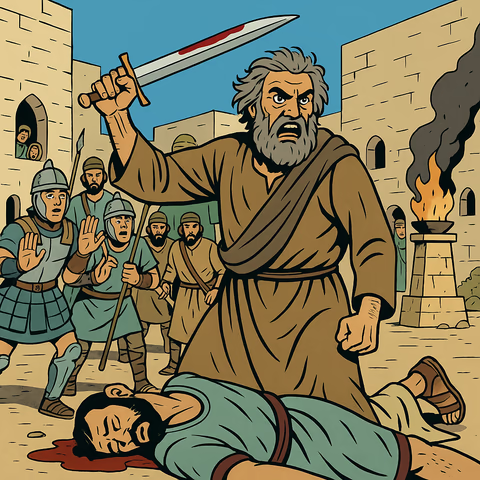
Written around 100 BC, providing a nearly contemporary account of the Maccabean revolt (167-134 BC).
Historical Context
A detailed historical account of the Jewish struggle for religious and political independence under the Maccabees, from Antiochus IV’s persecution to John Hyrcanus’s reign.
Arguments for Inspiration
- High historical accuracy confirmed by secular sources
- Written in a style similar to Samuel/Kings
- Preserved by both Jews and Christians
- Important for understanding the period between the testaments
Arguments against Inspiration
- Author explicitly disclaims divine inspiration
- Not in the Hebrew canon
- Focuses mainly on political rather than spiritual matters
- Written after prophetic activity had reportedly ceased
Our comments
Since the author explicitly denies any divine inspiration, it is unlikely that this was inspired by God. However, it’s an excellently written and very compelling historical work, and is highly recommended.
2 Maccabees
Written around 124 BC in Greek, covering events from 175-160 BC.
Historical Context
A theological interpretation of the early Maccabean revolt, emphasizing divine intervention and martyrdom. Includes the famous story of the seven brothers.
Arguments for Inspiration
- Strong theological focus on resurrection and martyrdom
- Influenced early Christian thought
- Contains important historical information
- Demonstrates God’s continuing care for His people
Arguments against Inspiration
- Author admits to summarizing and embellishing
- Contains some apparent historical discrepancies with 1 Maccabees
- Shows Greek literary influence
Our comments
It seems that any book that admits to embellishing the facts could not be inspired by God, as it would involve lying. However, it may be interesting from an historical perspective.
3 Maccabees
Written between 100-50 BC in Alexandria, though describing events from the 3rd century BC under Ptolemy IV.
Historical Context
Tells the story of Egyptian Jews’ persecution and miraculous deliverance when Ptolemy IV attempts to enter the Temple and later tries to kill Alexandria’s Jews using drugged elephants.
Arguments for Inspiration
- Demonstrates God’s protection of His people
- Shows continuity with other biblical deliverance narratives
- Preserved in ancient Greek manuscripts
- Accepted by Eastern churches from early times
Arguments against Inspiration
- Not related to the actual Maccabean revolt
- Contains legendary elements
- No early attestation as scripture
- Not included in early canon lists
Our comments
It was probably accepted as a true story, but it gives little reason to be consider as inspired by God.
4 Maccabees
Written between sometime in the 1st century AD in Alexandria, combining Jewish martyrology with Greek philosophical concepts.
Historical Context
A philosophical treatise using the Maccabean martyrs to argue that religious reason can control the passions. Expands on the martyrdom accounts from 2 Maccabees.
Arguments for Inspiration
- High literary and philosophical quality
- Strong emphasis on faithfulness to God
- Influential in early Christian martyrology
- Preserved in important biblical manuscripts
Arguments against Inspiration
- Heavy Greek philosophical influence
- Not historical in nature
- Written very late
- No early Jewish recognition
Our comments
It seems to be a Greek philosophical treatise, which makes it unlikely to be inspired by God. And if it were inspired, we would expect it to have wider recognition and be more widely accepted.
Additions to Daniel
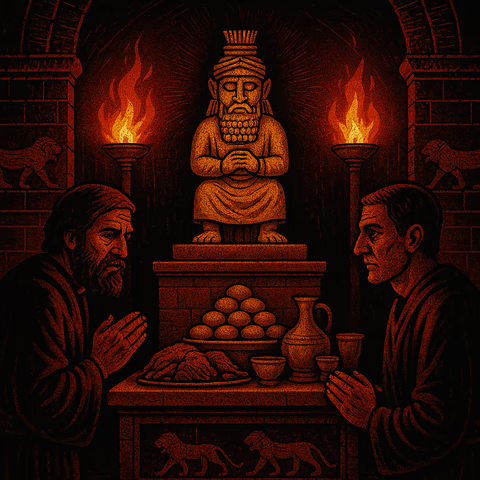
Additional stories and prayers showing God’s protection of the faithful and the folly of idolatry.
Historical Context
Added to Greek versions of Daniel by 100 BC, including the Prayer of Azariah and the Song of the Three Young Hebrews, Susanna, and Bel and the Dragon.
Arguments for Inspiration
- Consistent with Daniel’s themes
- Used extensively in early Christian worship
- Strong theological and moral teaching
- Ancient manuscript attestation
Arguments against Inspiration
- Not found in Hebrew/Aramaic Daniel
- Shows later literary style
- Contains some historical difficulties
- Not in Jewish canon
- There’s a dragon!
Our comments
The extra material about Daniel were probably just popular folk tales about him, although Susanna may well be a true story. Bel and the Dragon reads too much like popular fiction, almost like a children’s story, and of course, there’s a ‘dragon’.
However, they are worth reading. You can read these additions in our translation of Daniel.
Additions to Esther

The Septuagint version of Esther contains six extra sections which are not in the Hebrew version.
They add two letters from the King, prayers of Mordecai and Esther, Mordecai’s prophetic dream, explicit references to God (including circumlocutions for God’s Name) that are absent from the Hebrew version, and a conclusion from Mordecai himself.
Historical Context
Possibly added to Greek versions of Esther around 100 BC, perhaps to make the book more explicitly religious and to read better as a story.
Arguments for Inspiration
- Makes the religious elements more explicit
- Used in early Christian churches
- Enhances the story’s theological meaning
- Ancient manuscript tradition
- Refers to God’s Name in circumlocution form
Arguments against Inspiration
- Makes the narrative more dramatic
- Not in Hebrew manuscripts
- Not necessarily supposed to be original
- Extra sections seem to be originally in Greek, and don’t have the hallmarks of being translated from Aramaic or Hebrew
Our comments
While it’s possible that the additions represent an older, more genuine text of Esther (and that would be very exciting), it seems very unlikely for a few reasons which we outline on the Esther page.
However, people often misunderstand the additions. They may have been genuine attempts to provide the reader with extra historical information and to round out the story in a more dramatic way. It may be that the additions were never intended to deceive anyone or to be ‘fake’, just harmless additions to the Greek ‘edition’ of Esther.
These days we might call it the Expanded Edition or the Director’s Cut.
You, the reader, may have been supposed to know what was added.
Baruch
Purports to be written by Jeremiah’s scribe Baruch in Babylon after 586 BC, but likely composed in the 2nd or 1st century BC.
Historical Context
Combines historical narrative, communal confession, wisdom poetry, and prophetic consolation. Includes beautiful passages about wisdom and promises of restoration.
Arguments for Inspiration
- Consistent theological themes with Jeremiah
- Some early Christian churches accepted it
- Strong focus on repentance and divine wisdom
- Preserved in ancient Greek manuscripts
Arguments against Inspiration
- Historical inaccuracies about Babylonian period
- Written centuries after claimed date
- Not in Hebrew Bible or Dead Sea Scrolls
- Shows later theological developments
Our comments
Since it is clearly not written by Baruch, it appears to be an elaborate fraud and not inspired by God. However, it’s contents probably do reflect or copy popular thoughts at the (real) time of its writing.
Ezra (Alpha)
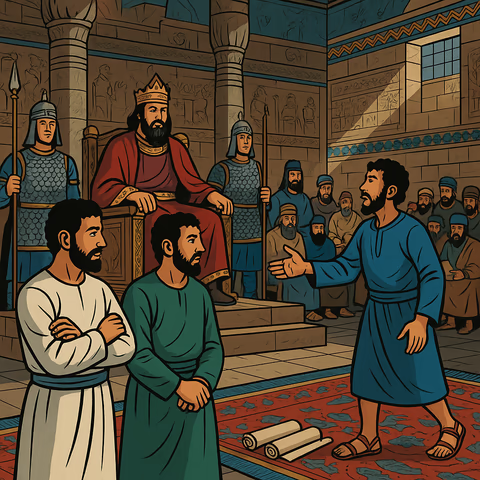
Also known as ‘1 Esdras’.
In contrast, the other ‘normal’ version of Ezra is more specifically known as ‘Ezra (Beta)’ or ‘2 Esdras’.
Confusingly, the Catholic tradition calls all these books by entirely different names. They call the normal Ezra ‘1 Esdras’, Nehemiah is ‘2 Esdras’, and this one is ‘3 Esdras’.
When does it date to? Well, that depends… If you believe it to be genuine, it was compiled by Ezra himself. If not, it could have been compiled around 100 BC, combining material from Chronicles, Ezra, and Nehemiah with additional content.
Historical Context
Retells the restoration of Jewish worship after the Babylonian exile, including the unique ‘Contest of the Three Young Men’ story not found in other biblical books.
Arguments for Inspiration
- Contains historically valuable information
- Used by early Christian writers
- Preserves possibly authentic traditions
- Shows strong theological consistency
Arguments against Inspiration
- May contain some historical discrepancies if presented in chronological order (which it may not be)
- Uncertain origin of unique material
- Not in the Hebrew canon
Our comments
This could be a later attempt at enhancing and rewriting the book of Ezra to include extra content. However, it’s not clear if this is the case. The historical ‘inaccuracies’ people often point to may actually be the result of the book not being presented in chronological order.
Some claim the additional text has been arranged into an ‘inclusio’ pattern, where material is grouped together to fit a reflective pattern, where certain events are arranged to create a certain structure to the text, not chronologically. If this is true, then our reasons for rejecting it are weakened.
The fact that it is not in the Hebrew canon is a strong reason to reject it, but on the other hand, it seems Greek-speaking Jews felt differently. So it’s not a clear case.
Joseph ben Gurion (Josippon)
Historical Context
Written in 10th century AD, though claiming to be by Josephus (1st century). Significant different variations of the text exist.
Historical Context
Hebrew retelling of Jewish history from Adam to the destruction of the Temple, based partly on Josephus’s works.
Arguments for Inspiration
- Preserves some historical traditions
- Important in medieval Jewish culture
- Contains some unique historical details
- Written in Hebrew
Arguments against Inspiration
- Very late composition
- Clearly not written by Josephus
- Depends on earlier sources
- Limited manuscript tradition
Our comments
An obvious fraud.
Jubilees
Written between 160-150 BC, possibly in response to Hellenistic influences on Judaism.
Historical Context
Retells Genesis and Exodus, adding many details about angels, demons, and religious laws. Presents a solar calendar of 364 days.
Arguments for Inspiration
- Found among Dead Sea Scrolls
- Important in Ethiopian Orthodox tradition
- Fills gaps in biblical narrative
- Strong focus on covenant faithfulness
Arguments against Inspiration
- Contains extra-biblical traditions
- Shows later theological developments
- Not widely accepted outside Ethiopia
- Contradicts many other biblical texts
Our comments
The book claims to be diviney inspired, a direct revelation to Moses via angel on Mount Sinai. It even calls itself the ‘second law’. This flies in the face of all other evidence and tradition, making its claims highly unlikely. Once we also take into account how it contradicts several Bible passages, and how its text betrays that it was written over 1,300 years after Moses, it is clearly an elaborate fraud.
Judith
Possibly from around 150-100 BC, written as an encouraging tale during the Maccabean revolt. However, the text may be a much older story that was updated or recycled for a new audience.
Historical Context
The story of a Jewish widow who saves her people by infiltrating the enemy camp and beheading their general, Holofernes. Emphasizes faithfulness to Jewish law and God’s deliverance.
Arguments for Inspiration
- Strong theological themes consistent with canonical books
- Early Christian writers frequently cited it
- Powerful message about God’s use of unlikely heroes
Arguments against Inspiration
- Contains clear historical anachronisms
- Contains unknown names of people and places
- Not included in Jewish canon
- May be intended as theological fiction rather than history
- No early Jewish sources treat it as scripture
Our comments
It is a good story, perhaps even based on a true story, but unlikely to be inspired by God.
Certainly the Jews never thought it was inspired, as they didn’t preserve the text. After all, the only Hebrew copies that survive to today are from the Middle Ages, and they appear to have been translated from Greek.
Interestingly, there is a possible explanation for the historical inaccuracies. It has been proposed that the story was originally not about the events of the Maccabean revolt at all, but a much older story from centuries earlier, and that somebody just updated the names to make it sound more relevant to (what was then) more modern times. It’s possible, but we don’t know.
The story of Judith is still commemorated today at Hanukkah; Jews celebrate by eating dairy products (such as cheese pancakes) to remind themselves of how Judith fed cheese and wine to Holofernes before beheading him.
Letter of Jeremiah
Written between 300-100 BC, though claiming to be a letter from Jeremiah to the exiles.
Historical Context
A passionate polemic against idolatry, structured around seventy-three reasons why idols are powerless and false gods are worthless.
Arguments for Inspiration
- Consistent with biblical teachings against idolatry
- Used by early Christian writers
- Strong moral and theological message
- Preserved in ancient versions
Arguments against Inspiration
- Later composition than claimed
- Not mentioned in early Jewish sources
- May depend on similar passages in Jeremiah and Isaiah
- Shows Hellenistic literary features
Our comments
Very unlikely that this was written by Jeremiah, is therefore a fraud, and not inspired by God. However, it’s railing against idolatry is probably a copy of popular thoughts at the time.
Psalms of Solomon
Although called Psalms of Solomon, it is not actually by Solomon, and the text does not claim that it was written by him. The name is merely a later tradition.
Historical Context
Written between 63-45 BC, reflecting on Pompey’s conquest of Jerusalem and subsequent events.
Historical Context
Eighteen psalms expressing messianic hope and national repentance, including detailed descriptions of the expected Messiah.
Arguments for Inspiration
- Similar in style to canonical psalms
- Strong messianic content
- Historical value for understanding the period
- Used in early Christian worship
Arguments against Inspiration
- Late composition date
- Clear historical references to specific events
- Not widely circulated in ancient times
- Limited manuscript evidence
Our comments
It seems to be just a genuine attempt to write some nice psalms to sing, with no reason to think that it was inspired by God.
Sirach (Ecclesiasticus)
Written around 180 BC by Jesus ben Sira, originally in Hebrew (fragments found at Qumran and Masada).
Historical Context
A collection of ethical teachings and proverbs, combining biblical wisdom with practical advice for daily life. Includes historical praise of famous ancestors.
Arguments for Inspiration
- Originally written in Hebrew
- Found among Dead Sea Scrolls
- Clear chain of transmission (grandson’s translation)
- Consistent with biblical wisdom tradition
Arguments against Inspiration
- Author identifies himself and shows that the work is his own
- Author doesn’t claim divine inspiration
- Not included in Jewish canon
- Written after the period when prophecy was believed to have ceased
Our comments
It reads like an ancient ‘self-help’ book written by a wise teacher. While containing valuable wisdom and moral teachings, the author presents it as his own work rather than divine revelation, making it unlikely to be inspired by God.
The 151st Psalm
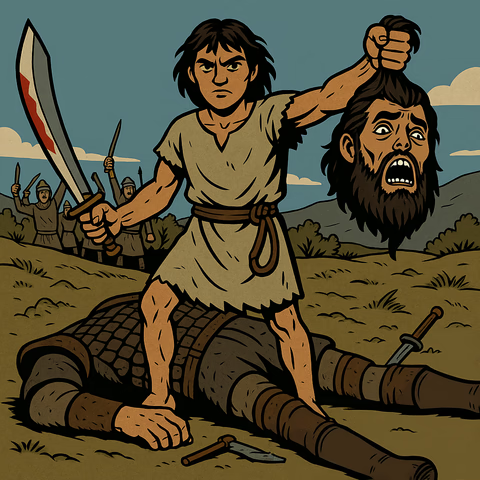
Composed possibly in the 2nd century BC, found in Hebrew at Qumran but best known from Greek versions, which is worded differently.
Historical Context
A short psalm attributed to David, describing his selection by God and victory over Goliath. Written in first person from David’s perspective.
Arguments for Inspiration
- Found among Dead Sea Scrolls in Hebrew
- Included in ancient Greek manuscripts
- Consistent with biblical accounts of David
- Accepted by Eastern churches from early times
Arguments against Inspiration
- Not included in the Hebrew Psalter
- Clearly later composition than other Davidic psalms
- Limited early attestation as scripture
- More biographical than other psalms
Our comments
While this psalm provides a somewhat interesting first-person perspective of David’s story, its absence from the Hebrew cannon, and its obvious later composition date suggest it wasn’t original and certainly wasn’t written by David.
Tobit
Written between 225-175 BC, likely in Aramaic (fragments found at Qumran). The story is set in the Assyrian exile period.
Historical Context
A religious novel about Tobit, a devout Jew in exile, and his son Tobias. The narrative includes angelic guidance, healing, and overcoming demonic opposition. It emphasizes prayer, almsgiving, and proper burial of the dead.
Arguments for Inspiration
- Included in the Septuagint used by early Christians
- Contains sound moral teaching consistent with canonical scripture
- Shows evidence of early composition (Qumran fragments)
- Historically accurate in its depiction of Assyrian period customs
Arguments against Inspiration
- Not in the Hebrew Bible
- Contains apparent historical errors (timeline inconsistencies)
- Includes magical elements some consider superstitious
- No evidence of it being used as scripture before the Christian era
Our comments
It seems very unlikely that a book containing historical errors and magic would be inspired by God. It reads more like a popular story.
Shepherd of Hermas
Written in Rome between AD 100-150, possibly by the brother of Bishop Pius I of Rome.
Historical Context
A series of visions, mandates, and parables focusing on repentance, Christian living, and church structure. Written in an apocalyptic style similar to Revelation.
Arguments for Inspiration
- Found in important biblical manuscripts
- Read in many early churches
- Listed in the Muratorian Fragment as useful
- Popular in early Christian education
- Similar style to canonical apocalyptic literature
Arguments against Inspiration
- Muratorian Fragment says it was written ‘very recently’
- Contains some unusual theological ideas
- Gradually fell out of liturgical use
- Shows signs of multiple authorship/editing
Our comments
Despite its early popularity and inclusion in some biblical lists, its late composition and gradual decline in usage suggest it was respected more as an instructional text than as inspired scripture. In other words, even the people who liked it didn’t think it was inspired by God. It reads more like a compendium of interesting things popular at the time.
Wisdom of Solomon
Written in Alexandria between 50 BC and AD 50, attributed to (but not actually by) King Solomon who lived around 950 BC.
Historical Context
A philosophical exploration of wisdom, justice, and immortality, written to strengthen Jewish faith against Hellenistic influences. Contains important messianic prophecies according to Christian interpretation.
Arguments for Inspiration
- High theological sophistication
- Quoted by early Christian writers
- Strong parallels with New Testament teachings
- Important bridge between Old and New Testament concepts
Arguments against Inspiration
- Contains Hellenistic philosophical concepts
- Clearly not written by Solomon
- Not accepted in Jewish tradition
Our comments
It seems unlikely that a book containing Greek philosophical concepts was inspired by God, and even less likely when it is falsely attributed to Solomon.